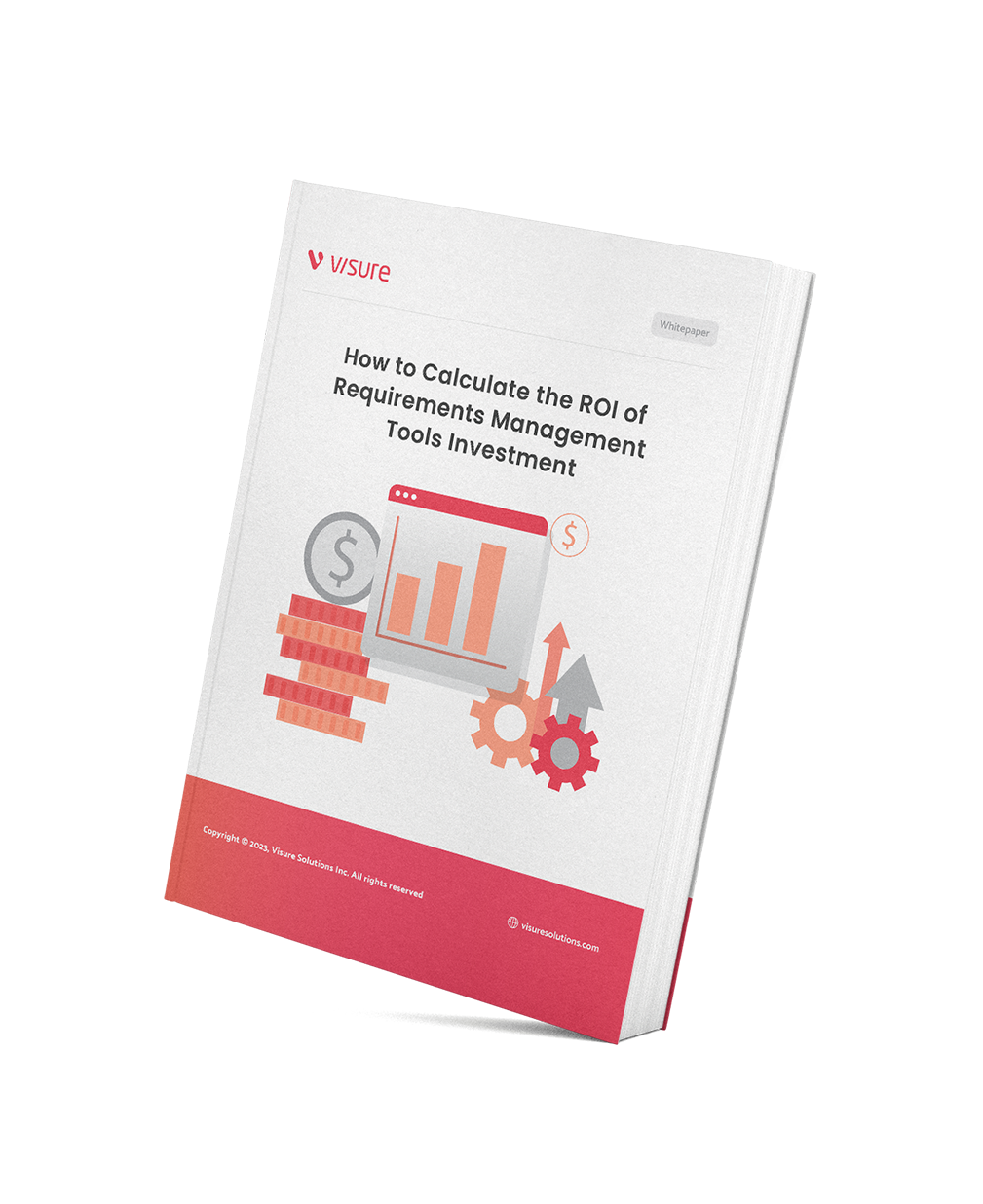ROI is a performance measure used to evaluate the efficiency of an investment or compare the efficiency of a number of different investments. ROI tries to measure the “money” return from an investment directly and is usually expressed as a percentage.
So, what is an ROI for Requirements Management Tools?
ROI for Requirements Management tools can be expressed as the benefits (increased staff productivity, decreased operation costs, etc.) divided by the cost of the Requirements Management tool. This ratio is then multiplied by 100 to get a percentage.
But how does calculating ROI for Requirements Management Tools help?
A number of benefits can be attributed to Requirements Management tools, including increased staff productivity and decreased operation costs. By understanding these benefits, you can make a strong case for investing in Requirements Management tools and improving your product development process. When calculating ROI, it’s important to consider all the potential benefits of an investment before making a decision. With this information in hand, you’ll be able to make an informed decision about whether or not Requirements Management tools are right for your organization.
What will you learn in this whitepaper?
- What is ROI?
- What does ROI for Requirements Management Tools mean?
- How to calculate the ROI for Requirements Management Tools?
- What all things you must consider when calculating the ROI for Requirements Management Tools?



